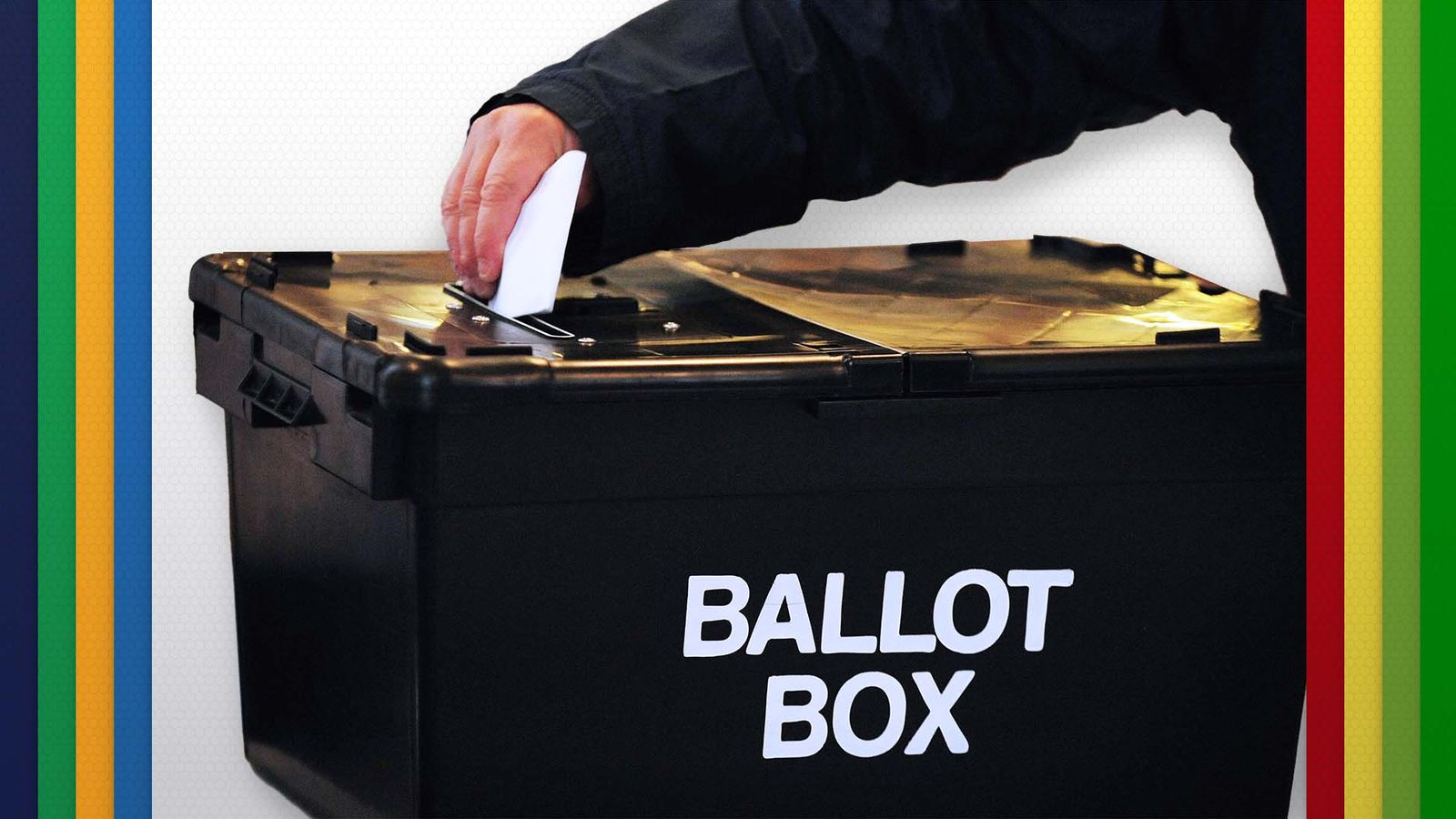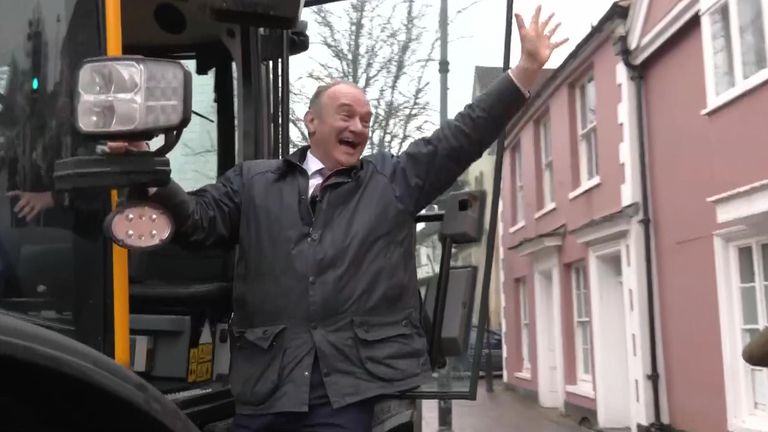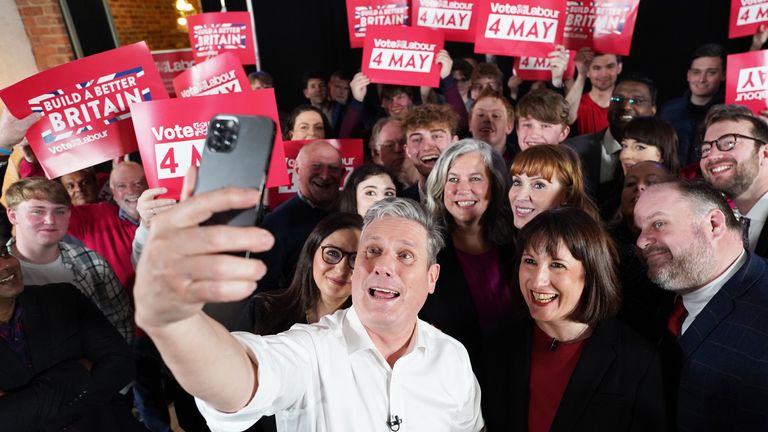Voters across much of England will head to the ballot box for local and mayoral elections on 4 May.
It will be the first time people in England will have to show photographic identification at voting stations before they can cast their ballot.
Sky News takes you through all you need to know about the upcoming local elections.
Where are they taking place?
Most local councils in England are holding elections – excluding the Greater London area as they were held in 2022.
The majority of councils held their last elections in 2019 so the four-year cycle means it is their turn again.
A total of 8,057 seats are up for grabs in 4,831 wards.
Mayoral elections will also take place in Bedford, Leicester, Mansfield and Middlesbrough.
Local elections in Northern Ireland will take place two weeks later on 18 May.
There are no local elections in Scotland and Wales.
Voter identification
The law was changed last year so voters in Great Britain now have to show photo ID before being issued a ballot paper in polling stations for general, local and police and crime commissioner elections, and referendums.
Voters in Northern Ireland have been required to show photo ID since 2007.
But this is the first time since the law came into play voters in the rest of the UK will have to provide photo ID.
When a similar system was introduced in Northern Ireland in 2003, there was an almost five-point drop in expected turnout but normal patterns were restored in subsequent elections.
Most forms of existing photo ID will be accepted, including:
• UK, EEA and Commonwealth passports or driving licences
• Most concessionary travel cards
• Blue Badge
• Proof of Age Standards Scheme (PASS) card.
Voters can still use photo ID that it is out of date, as long as it still looks like them and the name is the same one used to register to vote.
For those who do not have an accepted form of photo ID, their photo no longer looks like them or they are worried about using an existing form, such as due to a gender marker, voters can apply for a free Voter Authority Certificate.
The deadline for applying for a certificate for the English local elections is 5pm on 25 April, but people must have registered to vote before applying.
Voter registration deadline
People who wish to vote, and are eligible, must make sure they are registered.
For those who have not previously registered to vote or, have moved house, the deadline for the 2023 local elections is 11.59pm on 17 April.
People who have changed their name but are already registered can either contact their local council’s electoral services team and request a name change, or they can register again.
You can register online – it takes fives minutes and you need your National Insurance number.
For those who cannot do it online they can download a paper form.
Voters who want to vote by post need to apply to do so by 5pm on 18 April, and must also have registered to vote by the end of the day on 17 April.
Ballots will be sent out about three weeks before polling day and needs to be with their local council by 10pm on polling day to be counted. If you cannot post it in time, you can take the pack to your local polling station or council on polling day.
Voters can also get a trusted person to vote on their behalf – a proxy vote – and must apply for this by 5pm on 25 April, after first registering to vote.
How many seats/councils are parties defending?
The Conservatives hold the highest number of seats and councils in England, with the party holding majority control of 85 councils and defending 3,365 seats – 42% of the total seats.
Labour has majority control of 50 councils and 2,131 seats while the Lib Dems have control of 16 authorities and are defending 1,223 seats.
A third of English councils – 74 – currently have no overall control.
The Greens are defending 239 seats and Independents or local parties have majority control over five councils.
A combination of UKIP/Brexit/Reform UK are defending 30 seats, according to Sky News analysis.
There will be ward boundary changes in 49 authorities – more than a fifth of all councils – and boundaries are being altered in eight metropolitan boroughs, 14 unitary councils and 27 districts.
Boundary changes make it much harder to predict how the vote will go as they can encapsulate a different demographic.
What are the different types of authorities?
There are several different types of local authorities. County councils are responsible for larger services across an entire county such as education, transport, social care and fire and public safety.
District, borough and city councils provide a second tier and cover a smaller area than county councils, with responsibility for services like recycling, housing and planning applications.
In some parts of the country, there is just one tier of local government providing all local services. There are unitary authorities, and London and metropolitan boroughs.
Parish, community and town councils operate at a level below district and borough councils, and in some cases under unitary authorities. They provide help on issues such as allotments, bus shelters, play areas, local grants and have the power to issue fixed penalty fines for litter, graffiti, fly posting and dog offences.
How are local councillors elected?
In England, councillors are elected on four-year terms to either single or multi-member wards using the first-past-the-post electoral system.
In most councils (67%), all their seats – the areas of responsibility within the council – are elected at the same time every four years.
Nearly a third of councils (31%) see a third of their council seats elected each year for three years out of every four.
A very small number (2%) have half their council seats elected every two years. None of those are up for grabs this year.




